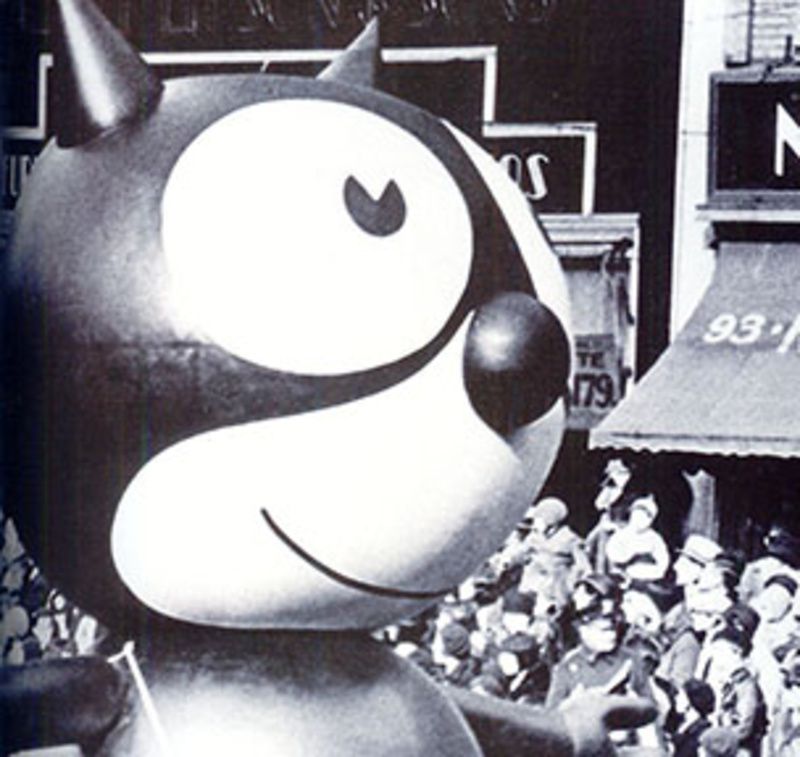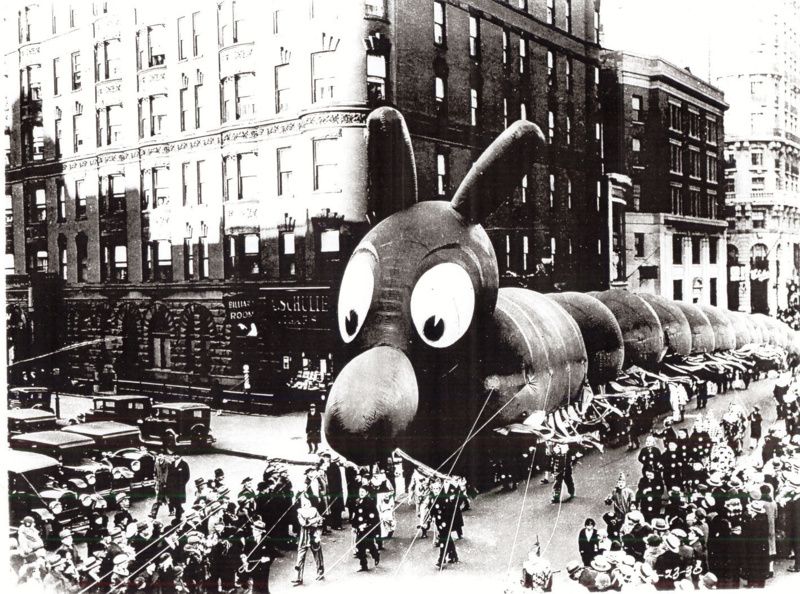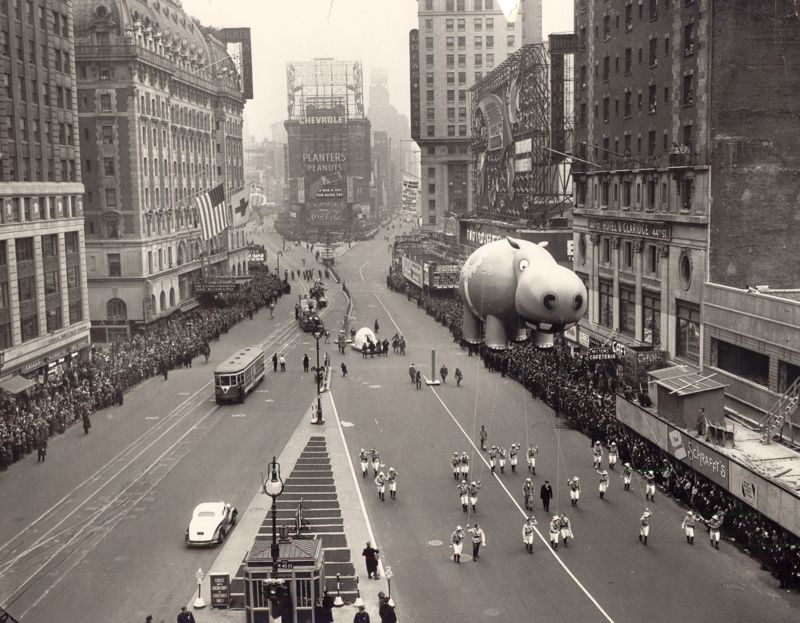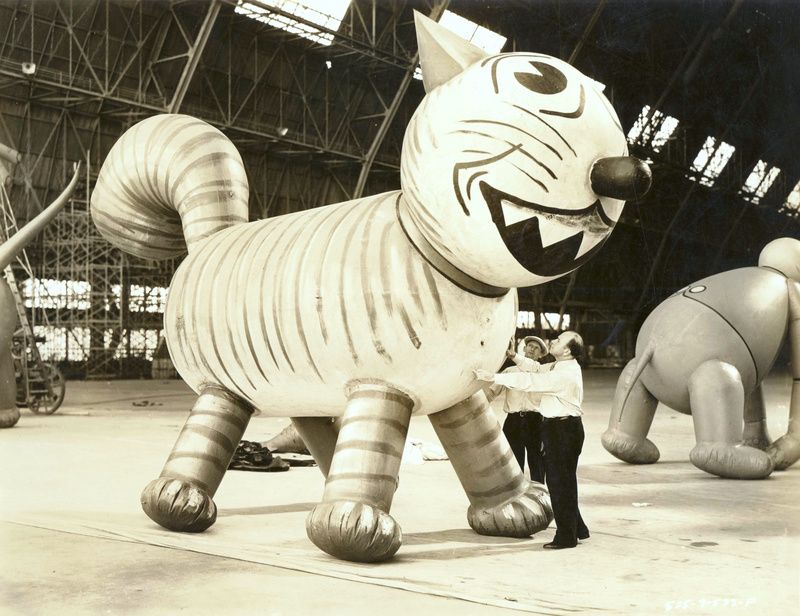Last-Minute NYC Holiday Gift Guide 🎁
We’ve created a holiday gift guide with presents for the intrepid New Yorker that should arrive just in time—

Thanksgiving Day Parade balloons used to be released into the air at the end of the procession!

In the 1920s and 30s, it wasn’t uncommon to catch a glimpse of the giant Macy’s Thanksgiving Day Parade balloons floating in the air days after the parade ended. It seems like a crazy idea now (and proved to be then), but parade balloons used to be released into the air at the end of the turkey-day festivities. While nowadays onlookers crowd the streets ahead of the parade to watch the balloon inflation, early 20th-century parade goers enjoyed the spectacle of balloons deflating. Though the balloon release and subsequent scavenger hunt were initially fun New York City traditions, many mishaps, and near disasters quickly brought the practice to a close.

The first giant balloon made an appearance at the Macy’s Thanksgiving Day Parade in 1927. Puppeteer Tony Sarg developed an inflatable “Felix the Cat” balloon to march down Broadway on a series of poles held by handlers. The following year, as described in the book Tony Sarg: Genius at Play by Stephanie Haboush Plunkett and Lenore D. Miller, Sarg introduced four more balloons to the parade: a fish, tiger, hummingbird, and elephant. These balloons were filled with helium and handled with ropes like an “upside-down marionette.”
From 1928 until 1932, the giant character balloons were released at the end of the parade route. A New York Times article from 1928 noted how Sarg was on hand to direct the release of the balloons as they sailed off into the sky with “peculiar gyrations and almost life-like expressions.” A report from 1931 describes a blue hippopotamus being swept away “within inches of the Empire State Building” before heading west toward Brooklyn. A dragon balloon was spotted “sailing merrily over the Battery in the direction of Governors Island.” A release valve was added to the balloons to allow for a slow leak of air, allowing them to stay aloft for up to a week after the parade.

Once the balloons were freed from their tethers, there was no control over where they went or where they ended up. Most balloons came to the ground within the five boroughs or on Long Island, but some balloons reportedly traveled over 100 miles from the city! In 1928, a character balloon was found in Greenville, Connecticut, nearly 160 miles from where it was originally released.
Character balloons were works of art and expensive ones at that. Reports from the time estimate their value at $2,000, so Macy’s was keen to have them returned for the following year’s parade. Rewards, often in the form of Macy’s gift cards, were given out to anyone who found the deflated characters and returned them to the department store. This made for a competition. When the 1928 tiger balloon landed on the roof of C. Sheperd in Richmond Hill, Long Island, his sons, and neighbors clamored to the top of the house to grab it. A tug-of-war ensued and the balloon was ripped to pieces.
Other balloons suffered similarly ill fates. With no control over the balloon’s flight path, a few ended up lost at sea. In 1931, the tiger balloon was found by a Greenpoint ferry boat captain on the East River while his hippopotamus pal was lost over the Atlantic. That same year, the cat balloon met an unfortunate end when it floated into a tension wire in New Jersey and caught fire.

The most daring balloon retrieval occurred when Col. Clarence E. Chamberlain caught a balloon on the wing of his plane. Shortly after the balloons had been released in 1931, Chamberlain took off from Floyd Bennet Field with a plane full of sightseers. One passenger spotted an unusual sight out the window, Felix the Cat. Egged on by the passengers, Chamberlain steered the plane next to the floating cat and caught the balloon on one of its wings. He was able to land safely, with all passengers and the feline balloon unharmed. It was a different story the next year.
In 1932, an intrepid Brooklyn aviator student named Annette Gibson spotted the Tom-Cat balloon while flying over Jamaica, Queens with her flight instructor Hugh Copeland. Authors Robert M. Grippo and Christopher Hoskins describe the incident that happened next in their book, Macy’s Thanksgiving Day Parade. Gibson reportedly told Copeland, “I think I’ll have a piece of the neck,” and flew the biplane straight toward the flying cat. The 60-foot ballloon wrapped itself around the plane’s left wing and Gibson cut the engine to avoid a fire as the plane quickly went into a tailspin.

As onlookers below looked up in shock, Copeland took control of the plane. As he did so, Gibson fell and the door to the plane opened, leaving her tethered to the vehicle only by a safety belt that was caught on her foot. In the knick of time, mere feet from the buildings below, Copeland restarted the engine and was able to right the plane. The pair landed safely at Roosevelt Field, but the incident brought the end of the balloon release. Gibson, seemingly unphased by the near crash, noted she had something to be grateful for that Thanksgiving.
Next, check out 10 Balloon Mishaps from the Thanksgiving Day Parade
Subscribe to our newsletter